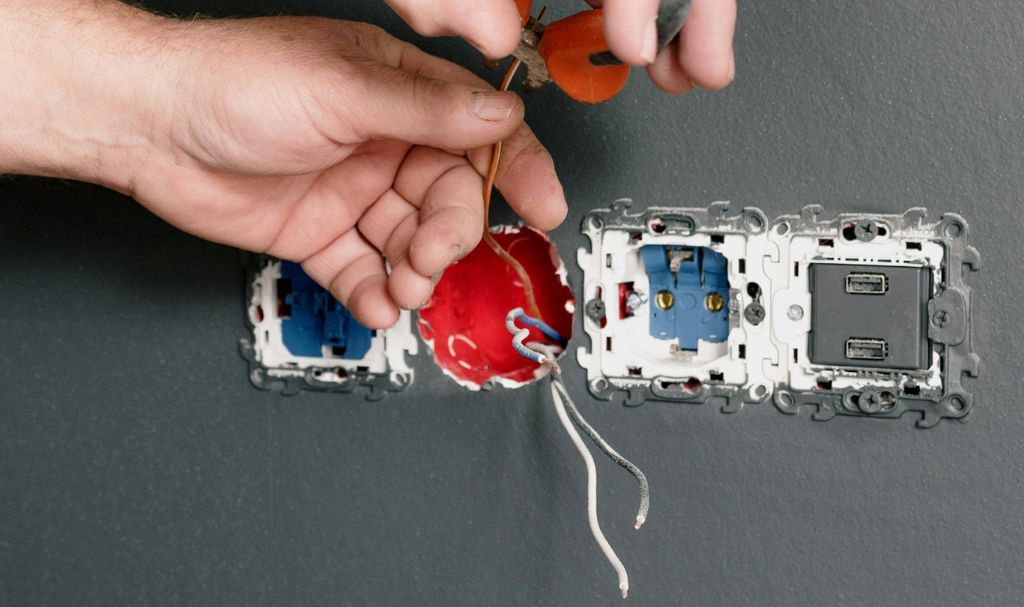From Bare Shell to Business Ready: Physical Setup Essentials for New Startups
04 June 2025
5 Mins Read

- Electrical Planning Is Not Just About Light Switches
- Data and Network Cabling Should Never Be an Afterthought
- Do Not Underestimate HVAC and Climate Control Needs
- Power Backup Systems Can Save More Than Just Data
- Lighting Choices Influence Mood and Efficiency
- Ergonomic Layouts Improve Output and Reduce Turnover
- Fire Safety and Emergency Planning Must Happen Early
- Security Systems Need Integration from Day One
- Signage and Accessibility Features
- Storage and Utility Access Are Not Optional Extras
- Waste Management Should Not Be an Afterthought
- Endnote
Behind every smooth launch lies a host of hidden tasks, including circuit layout, illumination, climate control, data wiring, safety checks, and room design. Skipping or rushing these steps often leads to pricey hiccups. Misplaced power outlets or sweltering tech closets can also easily turn into major headaches. Knowing what must be installed, tested, or set up before your crew moves in gives you a workspace that’s safe, flexible, and ready to roll from day one.
Electrical Planning Is Not Just About Light Switches
Mapping out the power setup beats scrambling over extension cords every time someone needs a charge. A sketchy system can box you into tight corners, trip breakers, or force tear-outs as you grow. Slotting enough sockets, wiring circuits correctly, and spreading the load right ensures your team’s gear stays running without surprises.
Placing outlets near desks, huddle spots, and tech hubs also cuts down on fire risks. Investing in surge guards and smart breaker panels that you can check from afar further help dodge downtime and expensive wall repairs down the road.
Data and Network Cabling Should Never Be an Afterthought

Treating your connection lines as an afterthought often means messy tangles and random Wi-Fi dead zones. Getting sturdy data lines in place from the start ensures every computer, server, and smart gadget can work without buffering. Mapping where to hide cable runs and install switch racks further keeps the office neat and reliable.
In older suburbs like those around Milwaukee (where many buildings were not designed for modern cabling), a local electrician Brookfield can help create a clean, future-proof setup. Throwing in Cat6 cables and clear conduit paths also means upgrades later will not require new walls or frantic rewiring sessions when you hit capacity.
Do Not Underestimate HVAC and Climate Control Needs
You might not notice the AC until it quits on a sweltering afternoon or the heater when winter chills settle in. Poor airflow or uneven temperature make teams miserable and tech moody. Getting in touch with duct and thermostat professionals early, pays off. Planning layouts, picking smart controls, and ensuring service access also prevents mid-season breakdowns. Skipping this usually means constant tweaks, uneven airflow battles, and cranky users waiting for relief.
Power Backup Systems Can Save More Than Just Data
A sudden outage can erase work, wreck devices, and tank service delivery. Even in areas with solid grids, voltage dips or blackouts strike without warning. A backup power setup is your safety net, buying minutes or hours to ride out the storm.
Deciding between battery modules, UPS units, or compact generators hinges on how long you can afford to pause. Prioritize boards powering servers, routers, and payment systems first. This approach not only protects files but signals to staff and clients that you are ready for bumps without missing a beat.
Lighting Choices Influence Mood and Efficiency
Harsh overhead fluorescents or dim corners turn any inspiring area into an eye strain zone. Flickering or uneven glow also causes headaches and drags energy levels. On the other hand, layered fixtures (desk lamps, wall sconces, and ambient uplights) craft a cozier, more alert vibe.
In addition, swapping in LEDs cuts power bills and lets you tweak brightness on the fly. Task lights at workstations, soft glows in lounge zones, and spotlighting for brainstorming nooks further break monotony. Smart lighting setups not only help teams switch gears smoothly, but also leave a good impression on visitors.
Ergonomic Layouts Improve Output and Reduce Turnover
Jam-packed desks and awkward traffic pathways might seem like minor inconveniences, but they wear people out fast. A comfy setup is not just a nice perk—it is a boost for productivity. Think about how everyone moves, where they meet, and which tools are used most. Leave space for stand-up desks, tuck printers where they will not jam halls, and keep shared stations easy to reach.
Fire Safety and Emergency Planning Must Happen Early
Smoke alarms, extinguishers, exit signs, and clear escape lanes are not just red tape—they can be lifesavers. Yet many teams wait for inspectors before giving these items real thought. Calling in certified experts early not only prevents fines, but ensures you can get everyone out fast if needed. Mounting detectors, keeping escape paths clear, and running drills should join your go-live checklist.
Security Systems Need Integration from Day One
Protecting valuables and private information should be part of your space design, not an add-on after things go wrong. Decide where to aim cameras, how to lock doors electronically, and which alarm sensors cover blind spots, all while lining up with lighting and decor. Affordable smart locks, swipe cards, or even basic PIN pads can layer your defense without straining your budget.
Signage and Accessibility Features
Clear exit markers, hazard warnings, and wheelchair-friendly ramps signal you are serious about everyone’s safety. Missing these points risks fines, accidents, or even fatalities. Bringing in someone who knows the local codes for a pre-launch can help nail down any blind spots. When signage flows with your decor and lanes stay open, compliance blends into daily life instead of sticking out as a chore.
Storage and Utility Access Are Not Optional Extras
Stashing supplies in random corners is a quick route to cluttered chaos. A smart layout—from drawer space to tool closets—keeps must-haves close and mess at bay. Labelled shelves for tech gear, paper, cleaning kits, and personal items cut down on “where did I put that?” moments. Adding wall racks or rolling carts can further uplift your team’s routine. The best part is that placing boxes near breaker panels, routers, and pipes quickly makes fixes and checks a breeze.
Waste Management Should Not Be an Afterthought
Without a plan for waste disposal, teams end up guessing where things go, or worse, ignoring it altogether. This not only creates mess but can lead to unwanted odors or even pest problems. Tucking bins into built-in cabinetry or under counters keeps things tidy without eating up floor space. Planning janitorial access further makes daily upkeep smoother and the whole office more efficient.
Endnote
Getting off the ground is not just about business ideas and software; it is about laying rock-solid roots. From thoughtful power layouts and airflow to safety systems and neat storage, each choice shapes how smoothly your crew works and grows. Tackling these must-haves early also steers you clear of nasty curveballs and sets up a professional, dependable space from day one.



















Comments Are Closed For This Article